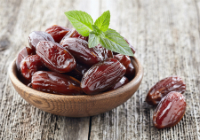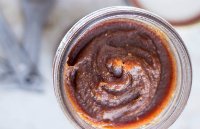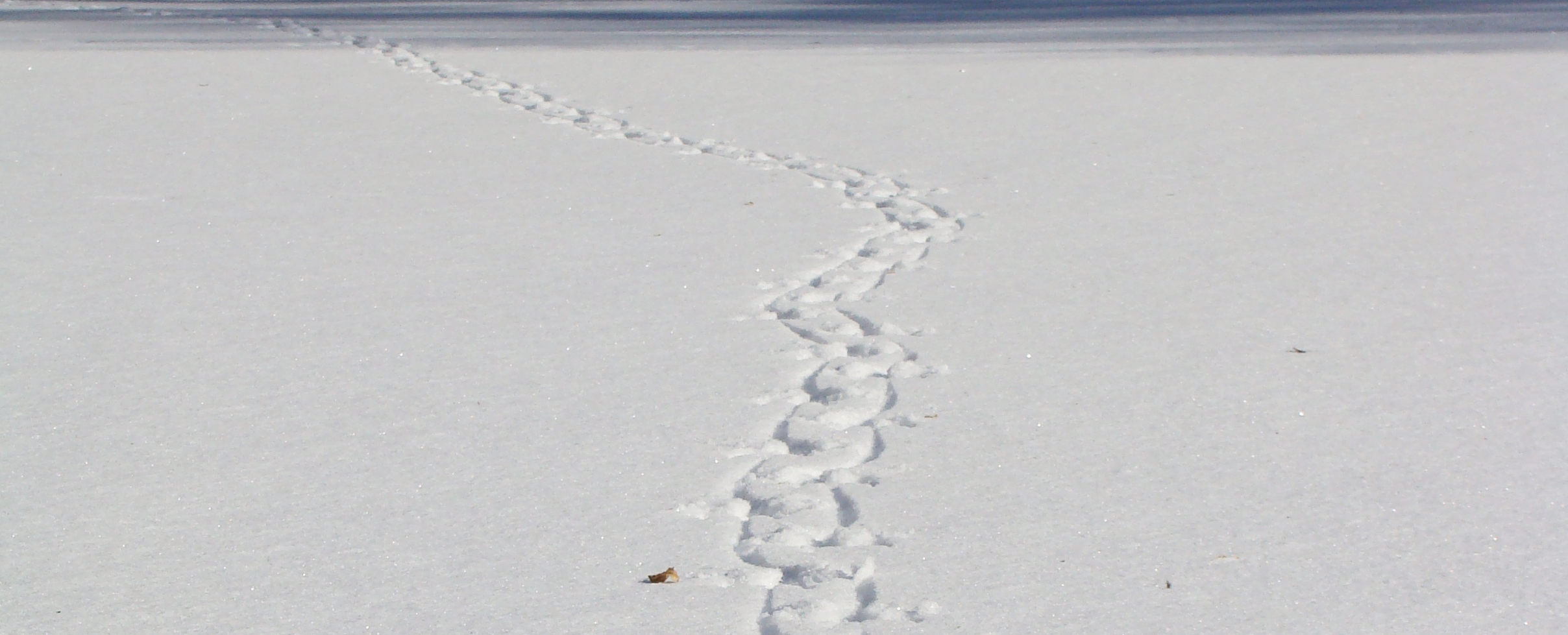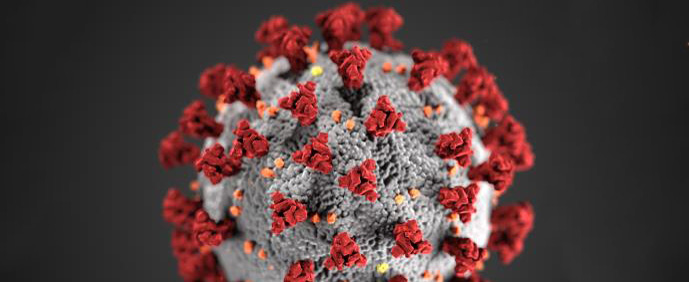Sugar is a carbohydrate, one of the major nutrient groups, but it doesn’t provide vitamins, minerals, or even fiber to our diet. Still, it’s added to an array of foods, including ketchup, fruited yogurt, cereal, canned soup, certain brands of lunch meat, salad dressing, condiments, bread, and so much more. While we require some sugar (glucose) in order to function properly, all of this added sugar is harmful to our system and often leads to an even stronger sense of craving sugar. Excess sugar consumption is associated with mood disorders, cognitive problems, heart disease, cancer, skin problems and many other health concerns.
Craving Sugar? Sugar’s Addictive Qualities…
When we ingest sugar, our body generates a response similar to that seen in addictions, which is why we develop cravings for more. It’s often called the cocaine of dietary additives.
Here’s how it works: Sugar — whether natural, processed or artificial — enters the bloodstream quickly, causing your blood sugar level to spike. The body recognizes this imbalance and acts to bring blood sugar back to normal. Insulin, a hormone, pushes glucose into the cells to be used for energy. But if you eat a lot of sugar, the body can’t keep up. Insulin has to work harder and the body overcompensates, causing blood sugar to drop too low – and your brain reacts. You feel depleted, irritable, and crave more sugar. Unfortunately, sugar addiction is socially acceptable and sugar is everywhere.
Sugar by Any Other Name…
Sugar names you might recognize are sucrose (table sugar), fructose (found in fruits, some root veggies, and honey), and lactose (milk sugar). Naturally occurring sugar in fruit and vegetables has a place in a balanced diet. But added sugar, artificial sweetener, and processed ‘natural’ sugar like high fructose corn syrup are detrimental to your health.
Eliminate Unhealthy Sugar From Your Diet…
- Learn where Sugar Hides. On ingredient lists, look for words ending in ‘-ose,’ which equate to sugar. If they’re among the first five items, it’s not worth buying. When sugar is among the last items in the list, that’s a better choice.
- Avoid the Fake Stuff. Products containing artificial sweeteners are not a healthy alternative. Diet soda, ‘fat free’ and ‘sugar free’ candy and cookies are associated with weight gain and cravings, creating a cycle of addiction.

- Sip with Awareness. A single can of soda, flavored water, Gatorade, or a juice box typically contain nine or more teaspoons of sugar. The American Heart Association recommends that children consume no more than 3 teaspoons of sugar a day.
- Beware of “healthy” processed foods. Kashi Go Lean Crunch contains 3.5 tsp of sugar in just one cup.
- Make Sweet Substitutions. Look for snacks labeled ‘no added sugar’ or ‘unsweetened.’ Use canned foods packed in water or natural juice. When baking, swap table sugar with applesauce, date paste, molasses, or fruit puree. Cinnamon or vanilla powder is a great way to sprinkle flavor onto yogurt, oatmeal, or coffee. Initially it might be hard to reduce sugar as you go through withdrawals, but over time your body and palate will adjust and desire it much less. Click here to find new ways to sweeten your recipes without sugar.
[hr]
Fast Fact…
8 of the top 10 causes of death are directly related to poor nutrition.
Food for Thought. . .
“Eat food. Not too much. Mostly plants.” – Michael Pollan
[hr]
Dates: An Ancient Treat for Modern Times
 Oddly wrinkled, with a single pit in the center, dates (Phoenix dactylifera) have been a sweet treat for more than 5,000 years. A modern day favorite, the Medjool date made its way from Mesopotamia and, in the 1920’s, was introduced into the U.S. when 11 roots were quarantined in Nevada for seven years. Nine plants survived, were relocated, and grown in Southern California in 1935. Medjool dates, which come in three sizes (jumbo, large and fancy/small), can be picked and eaten fresh.
Oddly wrinkled, with a single pit in the center, dates (Phoenix dactylifera) have been a sweet treat for more than 5,000 years. A modern day favorite, the Medjool date made its way from Mesopotamia and, in the 1920’s, was introduced into the U.S. when 11 roots were quarantined in Nevada for seven years. Nine plants survived, were relocated, and grown in Southern California in 1935. Medjool dates, which come in three sizes (jumbo, large and fancy/small), can be picked and eaten fresh.
The health benefits of dates are plentiful. A rich source of carbohydrates, mostly from natural sugars (66 g per 100g / 3.5 oz. serving), they contain vitamins A and K, as well as many of the B vitamins. The minerals copper, selenium, magnesium and manganese contribute to their preventive health benefits. Just one serving provides seven grams of dietary fiber, which supports healthy gut function. Eating dates in moderation can protect cells from damage caused by free radicals, and that’s good for the whole body.
Dates are used in vinegars, chutneys, butters, paste, and as a natural sweetener. Dates satisfy a sweet tooth without adding fat to your diet. When eating raw dates, mix them with raw nuts and seeds or add to a raw cream cheese – spread it on brown rice cakes for a yummy, nutritious snack. They’re the perfect snack to take on a long hike or for one of those days when you’re on the run and might need a quick pick-me-up.
Date Paste: The Ultimate All Natural Sweetener
Date paste can be used in baking, as a spread on your favorite cracker, and in chutneys and other recipes. Put your own spin on this recipe: while processing, add in apricots, raisins, dried mango or other fruit. You can also mix raisins or cranberries into the paste after it’s processed. Experiment and see what sweet bliss you can create!
Ingredients and Supplies
450 g. standard pitted dates (Medjool dates can be used but are more expensive)
1/2 litre Mason jar (or similar glass jar)
Approx. 3/4 c. water
Pinch of Salt
Splash of Pure Vanilla Extract (optional but recommended)
Food processor
Directions
Tightly pack the pitted dates in a Mason type glass jar. You should be able to cram about 450g in a half liter jar.
Pour water over the dates until the jar is really full. Add water if needed to cover dates.
Cover the jar. Soak dates overnight, at least 12 hours.
After soaking, transfer the entire content of the jar, including the water, to the bowl of your food processor.The mixture should look chunky and gooey.
Add vanilla and pinch of salt.
Process dates on high speed for about 5-8 minutes, or until smooth and creamy. The longer you process, the smoother and creamier your paste will be. After 3 to 4 minutes, you will have obtained a paste, but it will still be somewhat grainy. Run the processor for a bit longer.
After the desired consistency has been obtained, transfer your date paste back to your Mason jar. Place it in the fridge. Paste will darken after a few days. Keeps 3-4 months.
Healthy Eating Through Cognitive-Behavioral Therapy
 Do you love that slice of cake every night after dinner? Those morning muffins? How about those cookies and seemingly harmless pieces of candy you mindlessly enjoy throughout the day? If you’re regularly drawn to sweets, try going without them for a few days and see what happens. Are you having headaches, irritability, cravings, and symptoms that could only be described as withdrawal? Do you find yourself so uncomfortable that you’re drawn right back to those sugar-laden foods? It could be you’re trapped in what is called a cycle of sugar addiction.
Do you love that slice of cake every night after dinner? Those morning muffins? How about those cookies and seemingly harmless pieces of candy you mindlessly enjoy throughout the day? If you’re regularly drawn to sweets, try going without them for a few days and see what happens. Are you having headaches, irritability, cravings, and symptoms that could only be described as withdrawal? Do you find yourself so uncomfortable that you’re drawn right back to those sugar-laden foods? It could be you’re trapped in what is called a cycle of sugar addiction.
Why We Crave
Food craving, particularly for sweets, is more involved than not being able to resist a second slice of chocolate cake. Researchers have discovered that ‘intense sweetness’ (from sugar or artificial sweetener) creates a biochemical change in the brain that is a lot like the response to addictive substances. Sugar actually alters the dopamine network – part of the brain’s ‘pleasure response.’ Other factors that play a role in the food we crave include stress, family habits, where we eat and whom we eat with, and time of day.
Curing the Cravings
Our thoughts affect how we feel, and how we feel affects our actions and the choices we make. If you’re struggling with food choices and having a hard time managing sugar intake, consider cognitive-behavioral therapy (CBT). Working with a psychotherapist trained in CBT, you’ll learn to identify and change thoughts that influence emotions. You’ll develop insight into how even the smallest choices allow a behavior to persist and what is getting in the way of changing your patterns.
In a CBT session, clients use educational exercises, talk therapy, and simulations to change behavior. Sessions usually involve intense work over several weeks to arrive at effective solutions. If you’re struggling with cravings, depression, anxiety or addition, give CBT a chance. It could make all the difference in your way of life.
[hr]
Guiding Principles

THE INFORMATION OFFERED BY THIS NEWSLETTER IS PRESENTED FOR EDUCATIONAL PURPOSES. NOTHING CONTAINED WITHIN SHOULD BE CONSTRUED AS NOR IS INTENDED TO BE USED FOR MEDICAL DIAGNOSIS OR TREATMENT. THIS INFORMATION SHOULD NOT BE USED IN PLACE OF THE ADVICE OF DR FENSKE OR ANOTHER QUALIFIED HEALTH CARE PROVIDER. ALWAYS CONSULT WITH DR FENSKE OR ANOTHER QUALIFIED HEALTH CARE PROVIDER BEFORE EMBARKING ON A NEW TREATMENT, DIET OR FITNESS PROGRAM. YOU SHOULD NEVER DISREGARD MEDICAL ADVICE OR DELAY IN SEEKING IT BECAUSE OF ANY INFORMATION CONTAINED WITHIN THIS NEWSLETTER.
IMAGE ATTRIBUTIONS: CLICK HERE



